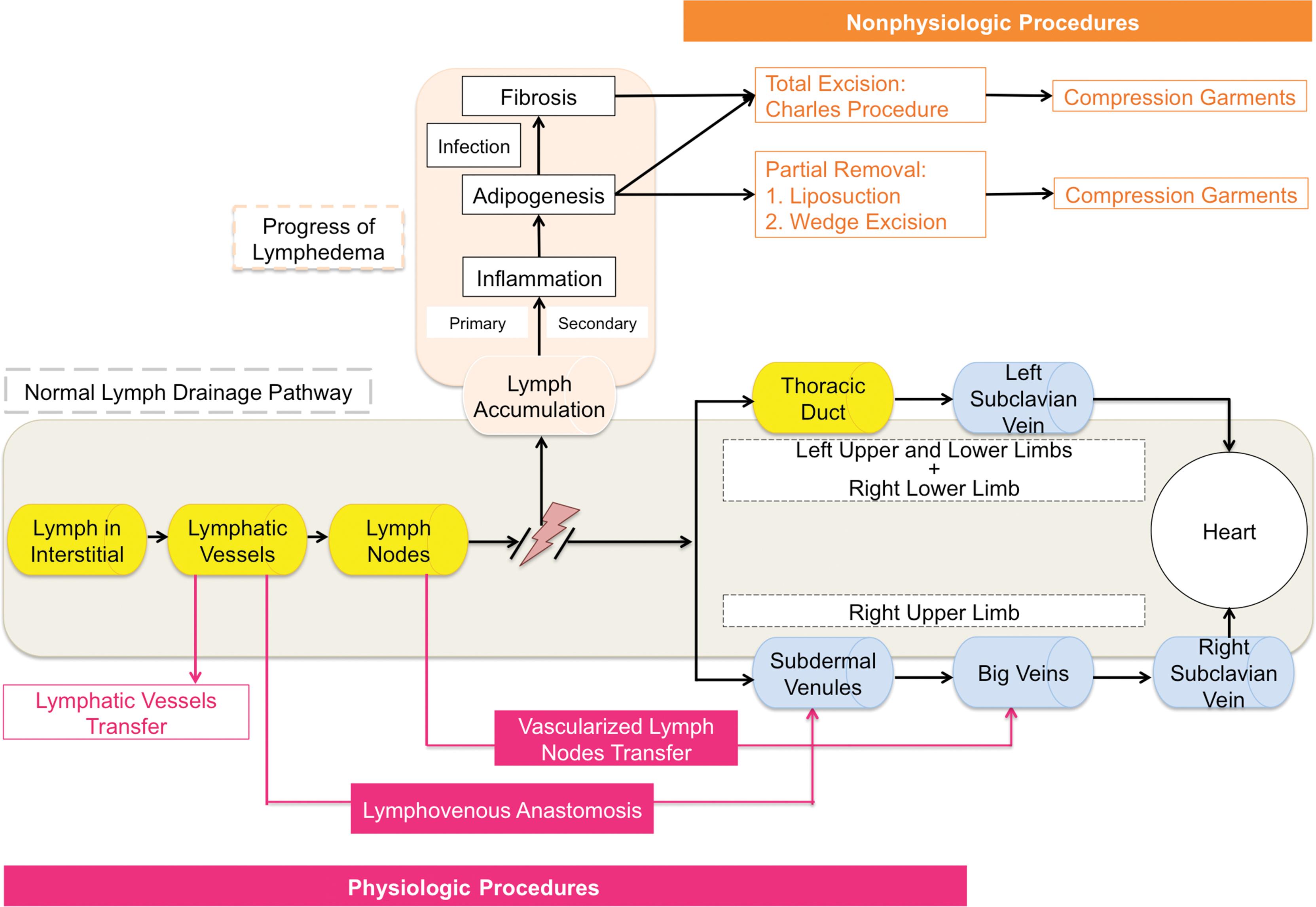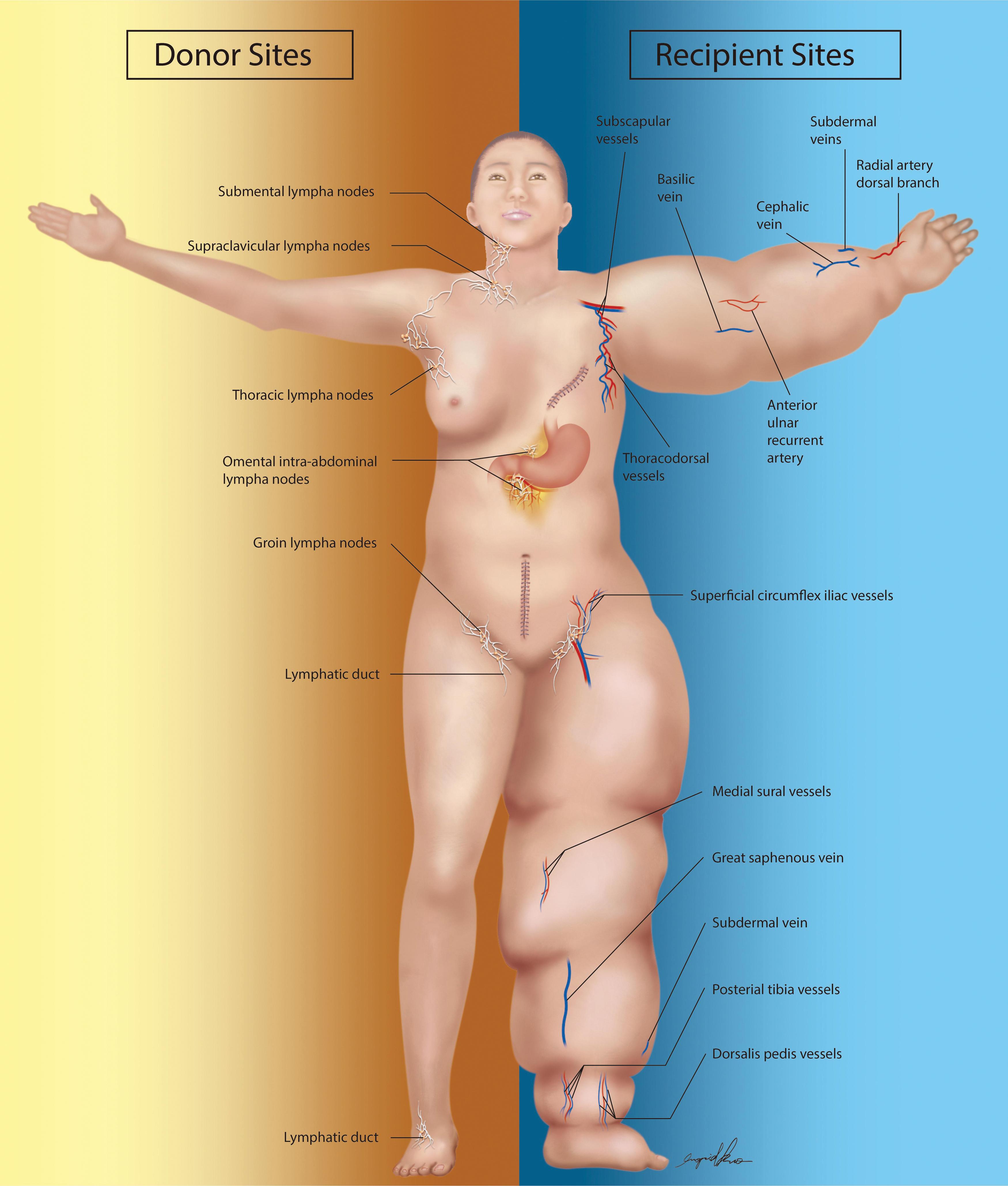Physical Address
304 North Cardinal St.
Dorchester Center, MA 02124
The surgical and microsurgical treatment of lymphedema is rapidly evolving with new techniques, improved outcome reporting, and descriptions of more effective treatment strategies. Moving forward within the specialty, a thorough understanding of previous developmental milestones related to anatomy, basic science research, diagnosis, variable techniques of lymphedema surgery, long-term outcomes, and multimodal treatment will aid in refining the development of future development pathways. A total of 6683 publications related to lymphedema published from 2003 to 2019 were listed in the PubMed database as of August 20, 2019, including 50 on lymphovenous anastomosis (LVA), 602 on physiotherapy, 1247 in risks/causes, 768 on quality of life, 123 on vascularized lymph node transfer (VLNT), 150 on indocyanine green (ICG), and 3984 on diagnosis. The milestones in the development of lymphedema research and the significant reported clinical experiences in the surgical treatment and microsurgical approaches are comprehensively described in the previous chapters and summarized in Fig. 27.1 . Recent rapid research interests and clinical inquiries are notable along the timeline of events. In addition, the circulation of normal lymphatic fluid and the available principles of lymphedema surgery are briefly outlined in Fig. 27.2 . These surgical approaches can be categorized into two groups: (1) nonphysiologic methods, including partial (liposuction or wedge excision) and total excision techniques, and (2) physiologic methods, including LVA and VLNT. From this schematic, one can learn the physiology of these surgical procedures and choose the right procedure for the appropriate patient, with the ability to have an effective outcome. Nonphysiologic procedures may decrease the lymphatic fluid production load and remove the by-products of excess lymph fluid but likely require lifetime compression garments to prevent the recurrence of lymphedema and excess limb volume. In correctly selected patients, physiologic procedures may allow for the elimination of compression garments, which has a significant impact on their quality of life. As the specialty continues to define surgical success, factors outside of limb circumference changes will become increasingly important to recognize. The overall goal of all lymphedema surgical procedures is to improve patient functionality and quality of life. Patient-reported outcome measures may have a greater impact on the definition of surgical success. The development of a comprehensive and multifactorial outcome assessment method will not only allow an individual physician to define success in his or her individual practice but will also create a common language between specialties to facilitate improvements in multidisciplinary patient care delivery.


The available evidence-based surgical treatment options are summarized in Fig. 27.3 . The right body half represents the available donor sites, and the left body half shows the available recipient sites for microsurgical procedures. As our understanding of lymph node basins and physiologic processes related to these procedures expands, increasing options will become available. More studies and improved methodologies regarding donor site morbidity and the indications and outcomes of various lymph node transplantation procedures are mandatory. Recipient sites for both microsurgical procedures, LVA and VLNT, are outlined as well. The functional subdermal venules are most available in the forearm and wrist in the upper limb or on the lower leg and ankle in the lower limb for LVA. Furthermore, experience has shown that there are variable recipient sites available for VLNT on the lymphedematous limb. Combined procedures in lymphatic microsurgery have also been introduced as an effective way to provide maximal patient benefit in fewer articles. Although adding layers of complexity to these surgeries may sound effective, the long-term outcome and quality of life related to these combined procedures still require further evaluation.

LVA was described very early in the treatment of lymphedema but only recently has come to the forefront of the specialty with the introduction of supermicrosurgical techniques by Isao Koshima and the use of ICG lymphography. ICG lymphography, which is a lymphatic dynamic imaging tool, has changed many treatment algorithms, as this minimally invasive diagnostic procedure allows for accurate identification of superficial lymphatic vessels and real-time lymph flow. Further expansion of ICG in the surgical planning and execution of lymphedema surgery has been explored by surgeons throughout the world and has greatly improved the refined uses of this valuable technique. Improved understanding of lymphatic flow directionality has led to the application of various anastomotic techniques to allow for efficient venous shunting of lymphatic fluid. Variations of end-to-end, end-to-side, side-to-end, and side-to-side configurations have all been reported. Patient selection, preoperative evaluation, and intraoperative confirmation of a favorable lymphovenous gradient, coupled with optimal postoperative care protocols, may be the crucial factors to ensure sustainable results following LVA.
Lymphatic transfer procedures have been explored and reported as early as Sir Harold Gillies in his landmark textbook Principles and Art of Plastic Surgery . The groin flap, containing superficial inguinal lymph nodes, was initially introduced as a possible treatment strategy for lymphedema by Leo Clodius in 1982, and a series utilizing this lymph node basin as a treatment for lymphedema was reported by Corrine Becker in 2006. Following clinical series showing benefits related to VLNTs and variable donor and recipient sites for VLNT, animal, experimental, and cadaveric studies were later conducted to validate and verify the mechanism of VLNT concepts related to these procedures ( Fig. 27.1 ). With translational research being performed in quite a few renowned centers, continued exploration of the pathophysiology, including adipogenesis and fibrosis of lymphedema and the intrinsic physiology related to these vascularized lymph node flaps, will better help define the role of the soft tissue and skin component and the established connections and interactions between the vascularized lymph nodes and the surrounding lymphedematous tissue. In addition, optimal patient selection for specific procedures will become realized with improved experience and practice.
Become a Clinical Tree membership for Full access and enjoy Unlimited articles
If you are a member. Log in here